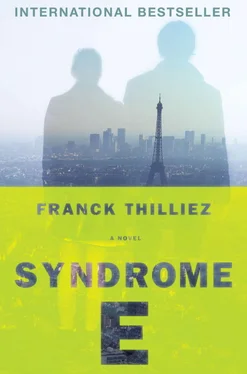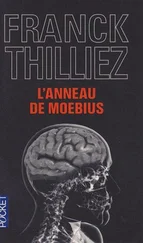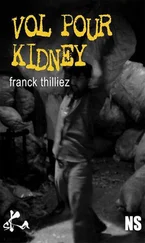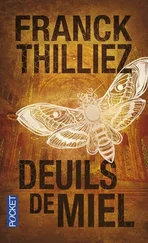“Here are the indexes. If you had the child’s name, you could locate the relevant file in just a few minutes. But since you don’t have much information, you should consult the card for the year she was placed or that of the institution, in those other drawers over there. They contain the lists of children admitted. It’s likely you’ll find the same names in several institutions at different times, as back then it was common practice to transfer the children, and orphans never stayed in the same place for more than a few years at a time. Once you have the card of a particular individual, you should refer to her file to compare it with your photos. I’ll leave you to it. Don’t hesitate to call me on that telephone over there if you have any questions.”
“Can you also make outside calls on that phone? My cell doesn’t seem to be working.”
“Yes, but we’ll have to charge you. And be sure to call the reception desk when you wish to leave, or you’ll never find your way.”
Lucie summoned her back just before she could leave the room.
“You never answered my question. What illegitimate children?”
Patricia Richaud removed her small round glasses and rubbed them fastidiously with a chamois.
“As the name suggests, they are children born out of wedlock. You said you’re with the police? What is it you’re looking for, exactly?”
“I have to admit I’m not quite sure myself.”
“If you’re delving into Quebec’s past, I would ask you not to treat it lightly. The period was dark enough as it is, and everyone here would rather forget it.”
“Dark? What are you talking about?”
The woman left quickly, shutting the door sharply behind her. Lucie put down her backpack on a round table. What had she meant by that? A dark period … Did it have anything to do with her investigation?
She looked around her.
“Okay… not out of the woods yet.”
She bucked herself up and, not knowing the family name, delved into the file cards that grouped the children by year. She thought it out: the film had been developed in 1955; the girl was about eight years old. Not likely she would have been admitted that same year, as she seemed to be familiar with the surroundings and personnel. And the lip-reading specialist had noticed a slight evolution in her growth. So Lucie started with 1954.
“Good God in heaven…”
For the year 1954 alone, they registered 3,712 admissions in the area’s various religious institutions. A veritable exodus of children.
Lucie set to work. She had first and foremost a precious first name. A few syllables deciphered on the lips of a child filmed on an old black-and-white short. She opened her memo book and reviewed what she’d written the other day during the meeting: “What happened to Lydia?”
Lydia …
Lucie took out the thirty-odd lists from the year 1954 and began reading through the names, arranged in alphabetical order. Girls and boys were mixed. All that was written, by hand, was their last name, first name, and age, as well as the number of the corresponding file.
The first time Lucie came across the name Lydia—Lydia Marchand, seven years old—she was sure she’d found the right one. Armed with her file number, she rushed to the wall of papers and dug out the correct file. The ID photo did not correspond to the ones of the other little girls that she’d printed off the film. But perhaps Lydia hadn’t been present for the rabbit massacre?
Lucie didn’t give up. The important thing here was the institution where Lydia was living: Convent of the Sisters of the Good Shepherd, Quebec. The cop went back to the file drawers, found the card corresponding to that establishment, and took out the cards relating to the boarders, of whom there were 347.
Three hundred forty-seven boarders. And those were only the girls.
To find the girl on the swing, the one who’d been Lydia’s friend, she had no choice but to go through the 347 files one by one and compare the ID photos of each with her own photos.
She spent the entire morning at it, without result. So that wasn’t the right Lydia… First discouragement. Realizing the scope of her undertaking, Lucie took an apple from her bag and cracked her neck. Her eyes were already getting red. The harsh fluorescent lights and those names, written in such a small hand one after the other, were hardly ideal. Was she even in the right city?
She reassured herself she was. Everything led here, to Montreal.
At 1:15, she attacked the year 1953. At around 5:00, after two bananas and a visit to the bathroom, she dove into 1952. This time as well, there was an nth Lydia who led her to another religious institution, La Charité Hospital in Montreal.
Mechanically, Lucie pulled out the tall stack of files relating to that establishment and began her last search of the day. The archives closed at 7:00, and in any case her head was about to explode. Names, names, and more names.
When she opened a folder located about three-quarters of the way down the stack and saw the photo attached to it, her throat tightened.
It was the girl, the one on the swing.
Alice Tonquin.
Three years separated the file photo from the one Lucie had printed off the film, but there could be no doubt. The deep-set eyes, direct gaze, oval face…
Her heart pounding, the young cop read through the scant information in the file. Alice Tonquin, born at the Convent of the Sisters of Mercy in Montreal in 1948… Lived there until the age of three… Then transferred two years in a row to live with the Franciscans of Mary in Baie-Saint-Paul… Then to La Charité Hospital in Montreal in 1952… End of her journey—or, rather, the rest must have been hidden in another file, since the one she was holding corresponded only to the girl’s admission to La Charité.
The few details were purely administrative, but no matter: Lucie finally had the identity she’d been searching for. She took notes, circled “La Charité Hospital, Montreal,” and picked up the phone in the room.
She made a call to her captain, Kashmareck, who since the beginning of the investigation had been in touch with the Sûreté in Quebec. She asked him to call them again and request an identity search for Alice Tonquin and Lydia Hocquart.
While waiting for him to call back, she called Patricia Richaud to tell her that she could come get her in a half hour, which would leave her time to put away the files.
In the quiet of the alcove, Lucie let herself fall into her chair and threw her head back. Then she drank the water in her bottle to the last drop.
She had done it. A photo, one simple photo, had brought her back through time and closer to her goal. She thought of Alice, that once nameless girl who now had a name. The little orphan with no father or mother, tossed about from hospital to convent, without bonds, points of reference, anything. Raised in the coldness of a religious institution: prayer at mealtimes, household chores, nights in the dormitory, an austere existence geared toward order and obedience to God. What future could she have had after such disastrous beginnings? How had she grown up? What had happened in that room with the rabbits? From the bottom of her heart, Lucie hoped she would soon have the answers to these questions. All those thoughts, all those faces that tormented her day and night, had to stop. Alice had to reveal her secrets.
The telephone in the room rang twenty-five minutes later, as she was putting away the last files. It was Kashmareck. Lucie picked up and didn’t give him time to speak:
“Tell me you’ve got something!”
From the way he cleared his throat, she immediately understood that it had led to another dead end.
“Yeah, I’ve got something, but it isn’t great. First of all, there’s not a trace of an Alice Tonquin. Neither in Canada nor in France. Oh, the cops at Sûreté have her birth certificate all right, from the hospital in Trois-Rivières where she was born, but not much more than that. They told me it wasn’t uncommon to lose sight of someone back then. With all the moving about between institutions, it was hard to keep track, and files got lost. After 1955, she was probably adopted by a family under another name, like a lot of those kids at the time. If she’s still alive, it’s under an unknown identity.”
Читать дальше












